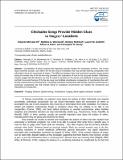Files in this item
Chickadee songs provide hidden clues to singers’ locations
Item metadata
| dc.contributor.author | Mercado, E. | |
| dc.contributor.author | Wisniewski, M.G. | |
| dc.contributor.author | Mcintosh, B. | |
| dc.contributor.author | Guillette, Lauren | |
| dc.contributor.author | Hahn, A.H. | |
| dc.contributor.author | Sturdy, C. | |
| dc.date.accessioned | 2017-09-15T16:30:07Z | |
| dc.date.available | 2017-09-15T16:30:07Z | |
| dc.date.issued | 2017-08-01 | |
| dc.identifier.citation | Mercado , E , Wisniewski , M G , Mcintosh , B , Guillette , L , Hahn , A H & Sturdy , C 2017 , ' Chickadee songs provide hidden clues to singers’ locations ' , Animal Behavior and Cognition , vol. 4 , no. 3 , pp. 301-313 . https://doi.org/10.26451/abc.04.03.08.2017 | en |
| dc.identifier.issn | 2372-5052 | |
| dc.identifier.other | PURE: 251081006 | |
| dc.identifier.other | PURE UUID: 85724ac7-2c86-4a0c-85a5-82043884dd47 | |
| dc.identifier.other | crossref: 10.26451/abc.04.03.08.2017 | |
| dc.identifier.uri | https://hdl.handle.net/10023/11676 | |
| dc.description | Funding: LMG was supported by an Izaak Walton Killam Memorial Scholarship (IWKMS) at UofA and is currently a BBSRC Anniversary Future Leader Fellow. | en |
| dc.description.abstract | Coordination of actions requires that organisms actively monitor the movements of others. The current study examined acoustic cues within the fee-bee song of chickadees that may provide listening conspecifics with information about the movements of singers. The difference between direct and reverberant acoustic energy present during the second note of the fee-bee song provided clear indications of how far the song had traveled. Preliminary analyses suggest that this distance cue may be robust to variations in the spectra and amplitude of song components,and that the acoustic features of the fee-bee song may facilitate simultaneous comparisons of reverberating fees with directly received bees by listening birds. Comparing coincident reverberation with directly received sounds may be a previously unsuspected way that animals living in reverberant environments can monitor the movements and interactions of conspecifics. | |
| dc.language.iso | eng | |
| dc.relation.ispartof | Animal Behavior and Cognition | en |
| dc.subject | Ranging | en |
| dc.subject | Distance | en |
| dc.subject | Spatial hearing | en |
| dc.subject | Vocalizations | en |
| dc.subject | Singing | en |
| dc.subject | Black-capped chickadee | en |
| dc.subject | Songbird | en |
| dc.subject | GE Environmental Sciences | en |
| dc.subject | QH301 Biology | en |
| dc.subject | NDAS | en |
| dc.subject.lcc | GE | en |
| dc.subject.lcc | QH301 | en |
| dc.title | Chickadee songs provide hidden clues to singers’ locations | en |
| dc.type | Journal article | en |
| dc.description.version | Publisher PDF | en |
| dc.contributor.institution | University of St Andrews. School of Biology | en |
| dc.contributor.institution | University of St Andrews. Centre for Social Learning & Cognitive Evolution | en |
| dc.identifier.doi | https://doi.org/10.26451/abc.04.03.08.2017 | |
| dc.description.status | Peer reviewed | en |
This item appears in the following Collection(s)
Items in the St Andrews Research Repository are protected by copyright, with all rights reserved, unless otherwise indicated.

